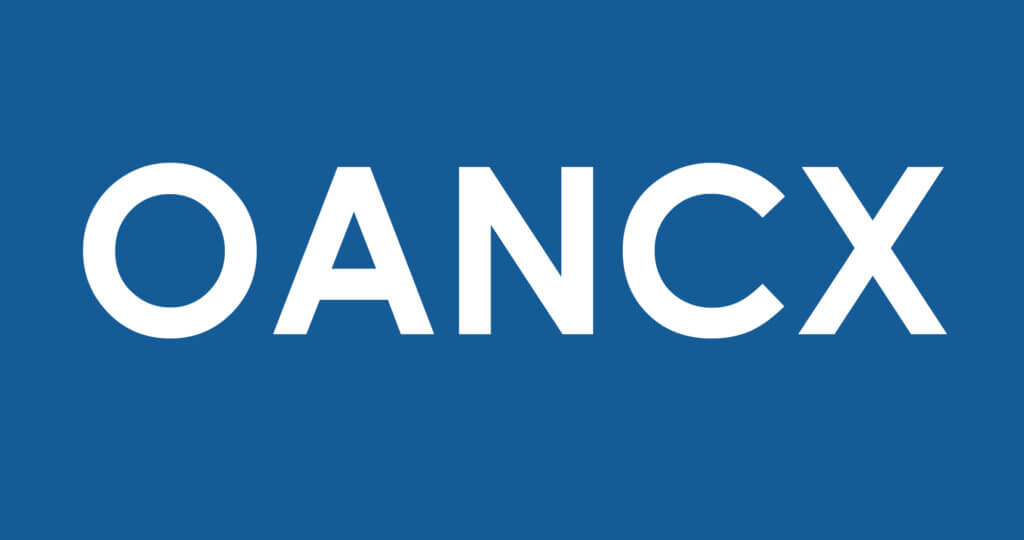Oakmark Bond Fund – Institutional Class
Average Annual Total Returns 06/30/22
Since Inception 06/10/20 -2.59%
1-year -10.28%
3-month -5.67%
Gross Expense Ratio: 0.89%
Net Expense Ratio: 0.52%
Expense ratios are based on estimated amounts for the current fiscal year; actual expenses may vary.
The Fund’s Adviser has contractually undertaken to waive and/or reimburse certain fees and expenses so that the total annual operating expenses of each class are limited to 0.74%, 0.54%, 0.52% and 0.44% of average net assets, respectively. Each of these undertakings lasts until 1/27/2023 and may only be modified by mutual agreement of the parties.
Past performance is no guarantee of future results. The performance data quoted represents past performance. Current performance may be lower or higher than the performance data quoted. The investment return and principal value vary so that an investor’s shares when redeemed may be worth more or less than the original cost. To obtain the most recent month-end performance data, view it here.
Dos and Don’ts of Investing in Stressed Markets
In our last quarterly letter, we walked through the challenges of navigating one of the trickier markets that investors (and central banks) have faced since the 2008 Global Financial Crisis. We wrote:
“Investors should expect more volatility as the interplay between aggressive central bank policies, inflationary forces and growth continues for the remainder of the year. The Ukrainian and Russian war, depending on both the length and possible resolution, also poses significant risks that are very difficult to handicap. Regardless, the U.S. Federal Reserve cannot pivot to a more supportive policy stance if growth decelerates more quickly than expected or if the war escalates. Investors who have grown used to the Fed backstop should not count on it this time around.”
We have a sobering update: Those challenges all still apply today. The Fed is still solely focused on tackling inflation, inflation still appears sticky in most key areas, the only effective (but blunt) weapon to tackle said inflation is tighter financial conditions (shift the aggregate demand curve left), and the Russia/Ukraine war trudges along.
Although the commentary happened to be prescient on the topic of increased volatility, even we were surprised by both the speed and degree of the market re-pricing over the past three months. Through June 30, investors have experienced record-breaking, year-to-date market events, including:
• the most negative start for a balanced portfolio of stocks (S&P 500 Index) and bonds (Barclays Bond Aggregate Index) since 1932—and the first time that both indexes have lost more than 10% at the same time.
• worst start for both investment-grade and high-yield corporates since inception of their respective indexes (Bloomberg U.S. Corporate Bond Index and Bloomberg U.S. Corporate High Yield Total Return Index)
• worst start for U.S. Treasurys in the index history (Bloomberg Barclays U.S. Treasury Index)
The sheer magnitude of the losses is likely to elicit emotional responses from investors; it’s almost unavoidable. And the more emotional we get, the more likely we are to make bad investment decisions. So in our small effort to prevent future bad decisions, this quarterly commentary focuses on a few key “dos and don’ts” of fixed income investing in stressed environments like today’s.
Bear markets induce panic, which tends to shorten investors’ time horizons without them even realizing it. Investors stop worrying about what the value of their investments will be in five to seven years and focus instead on how the latest news will affect revenues, profitability and free cash flow over the next one or two quarters. Investors then tend to perceive those next one or two quarters of material weakness as “the new normal” for earnings and free cash flow. In terms of fixed income investing, this can lead to overestimating the default risk based on a temporarily depressed environment. Focusing too much on a short-term stress case can cause investors to sell at the absolute worst times. Good fixed income investing during bear markets requires a balanced view of both the short-term stress case and the normalized, long-run earnings potential of a specific business.
Unrealized losses during these difficult periods are certainly painful, but they are temporary. Knee-jerk, emotional selling, however, can permanently impair your future returns. In high-yield fixed income, this has never been truer. Given the continuation of these challenging conditions, many investors will be tempted to sell their junk credit positions, especially in lower quality categories, driven by the belief that they can reinvest when the outlook is more favorable. But this theoretical exercise is very difficult to pull off in practice. The Covid-19-related environment in 2020 is a helpful example. Let’s envision a high-yield bond manager, who—unable to bear the uncertainty of Covid-19—sold all of their junk bond exposure for cash. Let’s say they did this on March 6, 2020, at 5.64% spread over Treasurys, roughly where junk credit is priced today. Pretty good timing, right? Three weeks later, high-yield spreads more than doubled to 10.87%, and the manager—now a hero—is sitting on cash instead of bonds and has saved their clients an 18% loss of capital. Would you be shocked if we told you that only two quarters later that 18% savings for the clients had already turned into a -2.6% loss? Fast forward one year, and the cost of the swap into that cash was -9.1%.
Below, we lay out the four other times over the past two decades when high-yield credit valuations came close to today’s levels, and we also show the forward three-year returns as well as the number of days it took for that market to break even. The takeaway is fairly simple: Historically, whenever high-yield credit approaches today’s levels of cheapness, although more pain might still be ahead, it is very difficult—if not impossible—to determine the perfect time to re-enter the markets after meaningful sell-offs.
| Event | HY spread1 | Next three-year total return2 | Trading days to recover breakeven total return | |
|---|---|---|---|---|
| 11/21/2007 | Global Financial Crisis/Lehman | 586 | 34.4% (10.4%) | 440 |
| 08/03/2011 | PIGGs Euro Crisis | 580 | 27.0% (8.3%) | 115 |
| 08/21/2015 | Energy/Credit Scare | 590 | 22.8% (7.1%) | 167 |
| 03/06/2020 | Covid-19 Crisis | 564 | 9.1%3 | 96 |
| 06/30/2022 | Inflationary Bust | 585 | ? | ? |
1BAML HY index data – option adjusted spread
2 First number is total return; second number (in parentheses) is annualized return
3One-year period for return calculation
Although staying invested during stressed environments will certainly help investors’ fixed income returns, one still needs to draw on fundamental research during periods of heightened economic pressure. Indeed, this is a vital time to ensure that the companies and securitizations one chooses have sufficient solvency to make it through the stressful period so that they can realize their earnings potential whenever conditions normalize. For example, we avoid companies that rely solely on capital markets to sustain their business in the short run. If a company needs to raise new debt or equity to keep the lights on or to refinance a near-term maturity, then one is simply playing a guessing game about how long the capital markets will remain closed. We prefer businesses that have another way out—a line of sight to sustainable free cash flow or an available asset to sell to mitigate default risk, for example. During these periods, we also avoid companies that may have problematic incurrence covenants that restrict essential investment or those with dangerous maintenance covenants that can accelerate a default, if triggered. In periods of stress, we want the company and its management team to determine its fate, not capital markets bankers or opportunistic loan-to-own lenders. Choose companies that have the maximum ability to control their own fate, even during a depressed earnings cycle.
It has been the worst start ever for fixed income, but there is a silver lining. Significantly lower prices across many asset classes indicate that the market has at least partially incorporated weaker growth prospects. This is a good time to remind ourselves that, despite the historic mark-to-market losses, we should not panic. When prices and valuations reflect the most severe challenges in the present, they often offer the best value investments for the future. Focus on the long-term earnings power of investments while also ensuring investment companies are not dependent on external forces to survive the short run. At Oakmark, we are committed to staying the course and drawing on our strong, fundamental, proprietary research to select those investments that we think will weather this storm successfully over the long term.
MARKET OUTLOOK POSITIONING
Performance and Outlook
The Oakmark Bond Fund returned -5.67% in the second quarter ending June 30, 2022, and lost 98 basis points of excess returns versus its benchmark, the Bloomberg U.S. Aggregate Bond Index. Inception-to-date performance was -2.59% through June 30, 2022, generating excess return against the benchmark of 252 basis points.
The Fund’s underperformance in the quarter was driven by security selection and asset class positioning, which were partially offset by positive attribution from duration and curve positioning. Specifically, security selection dampened returns by -168 basis points. Major detractors included: Ally Financial, Peloton, SVB Financial Group and Parsley Energy. Major contributors that partially offset those detractors included Ritchie Bros., Twitter, Ryman Hospitality Properties Inc. and Signature Bank. As in the first quarter, the U.S. Treasury curve continued to flatten, and interest rates increased significantly, which helped offset the weakness in our individual credit selection. Currently, we’ve adopted a barbell approach to curve positioning in U.S. Treasurys. Our overall portfolio duration of 5.4 years, compared to our peers and the index averages of 6.2 and 6.7, respectively, generated +140 basis points of attribution versus the index. Finally, our relative overweight in corporate and securitized credit was a drag on performance as credit spreads generally widened across all major fixed income classes, detracting -40 basis points from returns.
Outlook and Positioning
Although fixed income returns fell significantly in the second quarter, the risk of further weakness in credit markets remains as the Russia/Ukraine war continues and central banks consider further tightening to curb inflation. As we said in our first-quarter commentary, fixed income investors should focus on resiliency, liquidity and principal preservation for a wide array of scenarios, and this certainly holds true today. However, at Oakmark, we believe that value is a function of price, and prices have fallen in the latest quarter to levels that make our available investment universe undisputedly more attractive. As economic indicators and corporate earnings fall over the next one to two quarters, investors may be tempted to conflate macro-related deterioration with poor future returns in fixed income. But remember that the market is a very efficient forward-discounting machine, and a meaningful proportion of the economic deterioration has already been priced into many securities. We believe it is a good time to increase spread risk opportunistically, and we will likely add positions across the quality spectrum as our expected returns skew even higher compared to the risk-free alternatives.
We thank you for your continued support of the Fund.
The securities mentioned above comprise the following percentages of the Oakmark Bond Fund’s total net assets as of 06/30/2022: Ally Financial 4.700% Due 08-15-69 0.9%, Ally Financial CC 09/28 2.200% Due 11-02-28 0.5%, Parsley Energy CC 2/23 144A 4.125% Due 02-15-28 1.6%, Peloton Interactive 0.000% Due 02-15-26 0.5%, Ritchie Bros. CD22 144A 4.750% Due 12-15-31 0%, RHP Hotel CC 02/24 144A 4.500% Due 02-15-29 0%, Signature Bank QC 10/25 4.000% Due 10-15-30 1.1%, SVB Financial CC 09/26 1.800% Due 10-28-26 0.5%, SVB Financial QC 11/26 4.250% Due 02-15-69 0.7% and Twitter CC 12/29 144A 5.000% Due 03-01-30 0.8%. Portfolio holdings are subject to change without notice and are not intended as recommendations of individual stocks.
Access the full list of holdings for the Oakmark Bond Fund as of the most recent quarter-end.
The S&P 500 Total Return Index is a float-adjusted, capitalization-weighted index of 500 U.S. large-capitalization stocks representing all major industries. It is a widely recognized index of broad, U.S. equity market performance. Returns reflect the reinvestment of dividends. This index is unmanaged and investors cannot invest directly in this index.
The Bloomberg U.S. Corporate Bond Index measures the investment grade, fixed-rate, taxable corporate bond market. It includes USD denominated securities publicly issued by US and non-US industrial, utility and financial issuers.
The Bloomberg US Corporate High Yield Bond Index measures the USD-denominated, high yield, fixed-rate corporate bond market. Securities are classified as high yield if the middle rating of Moody’s, Fitch and S&P is Ba1/BB+/BB+ or below. Bonds from issuers with an emerging markets country of risk, based on Bloomberg EM country definition, are excluded
The Bloomberg US Treasury Index measures US dollar-denominated, fixed-rate, nominal debt issued by the US Treasury. Treasury bills are excluded by the maturity constraint, but are part of a separate Short Treasury Index. STRIPS are excluded from the index because their inclusion would result in double-counting.
The Bloomberg U.S. Aggregate Bond Index is a broad-based benchmark that measures the investment grade, U.S. dollar-denominated, fixed-rate taxable bond market. The index includes Treasurys, government-related and corporate securities, mortgage-backed securities (agency fixed-rate and hybrid ARM pass-throughs), asset-backed securities and commercial mortgage-backed securities (agency and non-agency). This index is unmanaged and investors cannot invest directly in this index.
The Oakmark Bond Fund invests primarily in a diversified portfolio of bonds and other fixed-income securities. These include, but are not limited to, investment grade corporate bonds; U.S. or non-U.S.-government and government-related obligations (such as, U.S. Treasury securities); below investment-grade corporate bonds; agency mortgage backed-securities; commercial mortgage- and asset-backed securities; senior loans (such as, leveraged loans, bank loans, covenant lite loans, and/or floating rate loans); assignments; restricted securities (e.g., Rule 144A securities); and other fixed and floating rate instruments. The Fund may invest up to 20% of its assets in equity securities, such as common stocks and preferred stocks. The Fund may also hold cash or short-term debt securities from time to time and for temporary defensive purposes.
New Fund Risk: The Fund is recently established and has limited operating history. The Fund may not be successful in implementing its investment strategy.
Under normal market conditions, the Fund invests at least 25% of its assets in investment-grade fixed-income securities and may invest up to 35% of its assets in below investment-grade fixed-income securities (commonly known as “high-yield” or “junk bonds”).
Fixed income risks include interest-rate and credit risk. Typically, when interest rates rise, there is a corresponding decline in bond values. Credit risk refers to the possibility that the bond issuer will not be able to make principal and interest payments.
Bond values fluctuate in price so the value of your investment can go down depending on market conditions.
The information, data, analyses, and opinions presented herein (including current investment themes, the portfolio managers’ research and investment process, and portfolio characteristics) are for informational purposes only and represent the investments and views of the portfolio managers and Harris Associates L.P. as of the date written and are subject to change and may change based on market and other conditions and without notice. This content is not a recommendation of or an offer to buy or sell a security and is not warranted to be correct, complete or accurate.
Certain comments herein are based on current expectations and are considered “forward-looking statements”. These forward looking statements reflect assumptions and analyses made by the portfolio managers and Harris Associates L.P. based on their experience and perception of historical trends, current conditions, expected future developments, and other factors they believe are relevant. Actual future results are subject to a number of investment and other risks and may prove to be different from expectations. Readers are cautioned not to place undue reliance on the forward-looking statements.
All information provided is as of 06/30/2022 unless otherwise specified.







